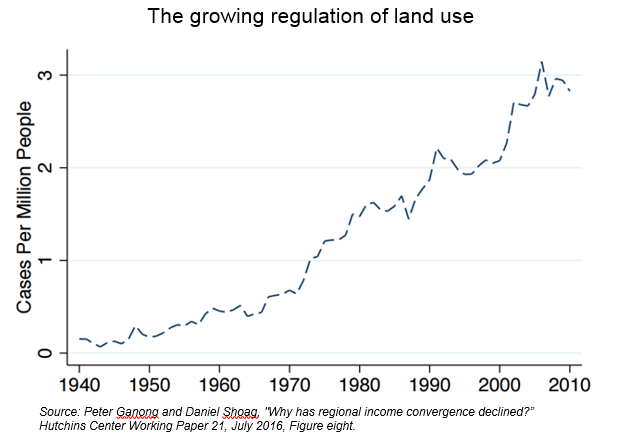Extreme poverty worldwide has been declining over the past few decades (unbeknowst to most Americans) with the chance of eradicating it by 2030. Organizations are testing new anti-poverty programs, including a 10-year experiment with guaranteed basic income in Kenya. One program titled Graduation “included 10,495 households in Ethiopia, Ghana, Honduras, India, Pakistan, and Peru. Almost half of the families in the study lived on less than $1.25 a day.” The results of this experiment were published last year:
 The specifics of Graduation varied by country, but the basic premise was the same. All the Graduation programs gave families some kind of “productive asset,” such as sheep, goats, seed corn, bees, or small shops. They all provided training on how to build a business using the assets, and gave food or cash aid to the families for up to a year, in part to discourage them from eating or selling their “productive asset.” The programs also gave families access to a savings account, and some programs required that families contributed to the account regularly.
The specifics of Graduation varied by country, but the basic premise was the same. All the Graduation programs gave families some kind of “productive asset,” such as sheep, goats, seed corn, bees, or small shops. They all provided training on how to build a business using the assets, and gave food or cash aid to the families for up to a year, in part to discourage them from eating or selling their “productive asset.” The programs also gave families access to a savings account, and some programs required that families contributed to the account regularly.
One year after the program ended, researchers found that Graduation families bought more, owned more, spent more time working, were more politically active, and missed fewer meals than similar families who hadn’t enrolled in the program. The changes were all statistically significant, but, the researchers note, not very large.[ref]”The exception was Honduras,” the author writes, “where families didn’t consume more one year after the end of Graduation (though they did immediately after the program ended). The driving factor there was likely that most Hondurans chose chickens as their productive asset, and most of the chickens died of illness a year after Graduation finished[.]”[/ref]
Admittedly, the program “is expensive, costing between $3,000 to $6,000 per household, depending on the country. But in five out of the six countries the researchers studied, Graduation provided a slight positive return on investment because households in those countries ended up consuming more — thus paying more money into their local economies — than it cost to aid them.”
I’m excited about these experiments and the future of evidence-based policies and programs. I’ve often complained (privately) over the years about the “solutions” to poverty by both the American Right and Left. To generalize in a rather cynical way, the Left assumes that if you throw money at the problem, it will go away. The Right, on the other hand, just thinks the poor should “pull themselves up by their bootstraps.” To soften it a tad, the Left believes in providing the poor with resources/capital. The Right believes that to truly rise out of poverty requires proper incentives, behaviors, and work. Programs like the one above might demonstrate that “the true answer to poverty requires a little bit of everything: Teaching people how to fish, giving them fishing nets, and giving them the fish too.”


 The specifics of Graduation varied by country, but the basic premise was the same. All the Graduation programs gave families some kind of “productive asset,” such as sheep, goats, seed corn, bees, or small shops. They all provided training on how to build a business using the assets, and gave food or cash aid to the families for up to a year, in part to discourage them from eating or selling their “productive asset.” The programs also gave families access to a savings account, and some programs required that families contributed to the account regularly.
The specifics of Graduation varied by country, but the basic premise was the same. All the Graduation programs gave families some kind of “productive asset,” such as sheep, goats, seed corn, bees, or small shops. They all provided training on how to build a business using the assets, and gave food or cash aid to the families for up to a year, in part to discourage them from eating or selling their “productive asset.” The programs also gave families access to a savings account, and some programs required that families contributed to the account regularly.
 …Imagine that this whole system is going on at the same time that IKEA spends millions of dollars lobbying senators about chair-related issues, and that these same senators vote down a bill preventing IKEA from paying off other companies to stay out of the chair industry. Also, suppose that a bunch of people are dying each year of exhaustion from having to stand up all the time because chairs are too expensive unless you’ve got really good furniture insurance, which is totally a thing and which everybody is legally required to have.
…Imagine that this whole system is going on at the same time that IKEA spends millions of dollars lobbying senators about chair-related issues, and that these same senators vote down a bill preventing IKEA from paying off other companies to stay out of the chair industry. Also, suppose that a bunch of people are dying each year of exhaustion from having to stand up all the time because chairs are too expensive unless you’ve got really good furniture insurance, which is totally a thing and which everybody is legally required to have. Economist Bryan Caplan–himself not a utilitarian–argues that a
Economist Bryan Caplan–himself not a utilitarian–argues that a 




